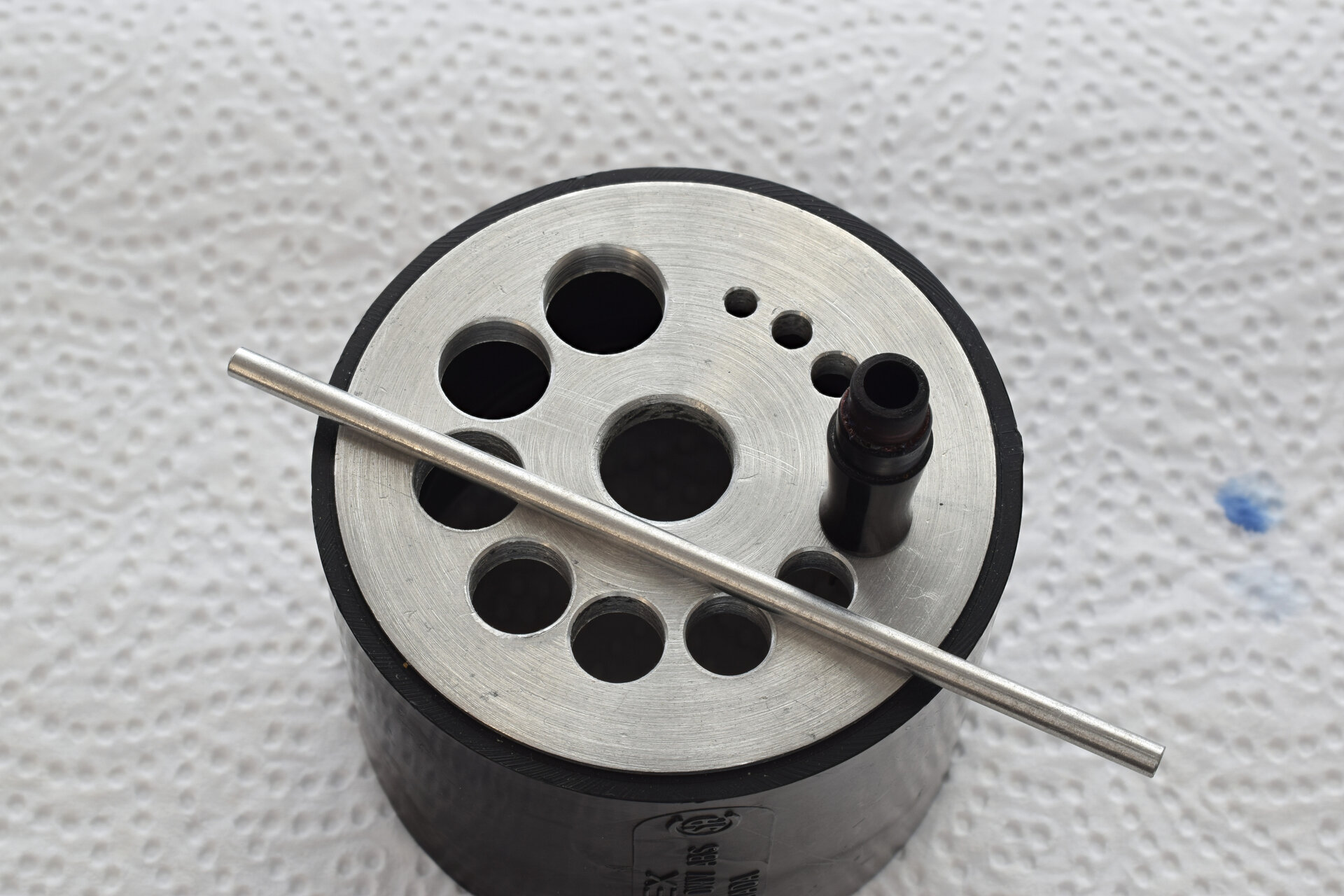How to Clean a Gold Nib
Servicing
By PensInk – On November 3rd, 2020
Last revised on 5 November 2020
1Metal oxides are often used as color pigments, such as titanium(IV) oxide (TiO2) as titanium white for a white or chromium(III) oxide (Cr2O3) for an olive-green hue. But these oxides also serve as abrasives and polishing agents, such as aluminum oxide (Al2O3), known as corundum, which is also contained in many car polishes and other polishing and abrasive compounds.
2However, if we want to clean and polish up the sensitive gold nib of an old fountain pen, we should fall back on iron(III) oxide (Fe2O3) from the jewelry or dental supplies. This oxide is also known under the name Jeweler’s Rouge, although there are other names, some of which are ambiguous, such as the German word “Pariser Rot” (engl. Paris Red / fr. Rouge de Paris), which may also refer to the poisonous lead(II,IV) oxide.
3The Jeweler’s Rouge we need is available as powder, which has to be mixed with water to form a paste, or in ingot form, in which the iron oxide is bound in wax. A small amount from such an ingot can be scraped off, e.g. with a screw or a knife, and then mixed with some oil:
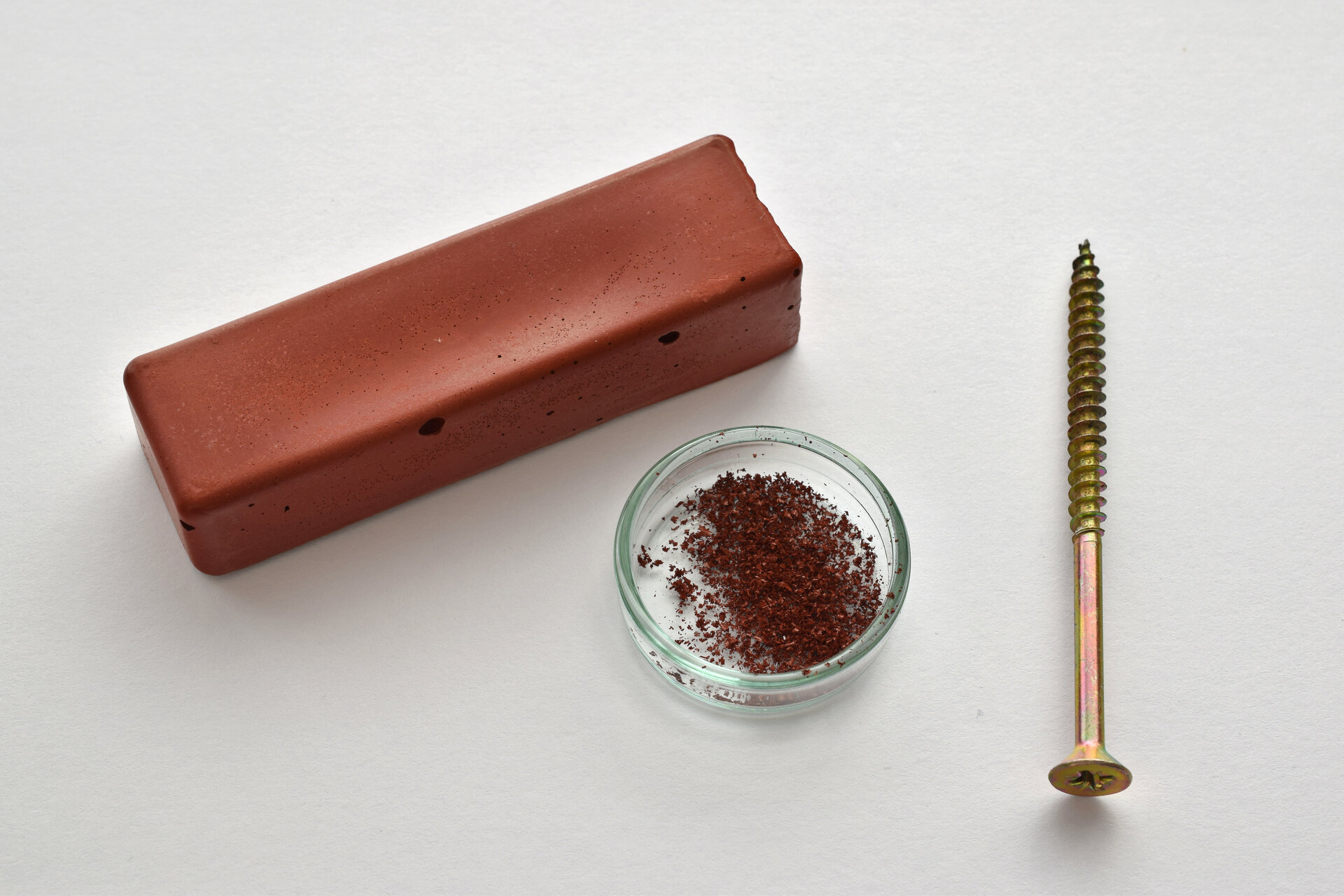 Fig. 1
Fig. 1
Disassemble the Nib
4However, before we can clean or polish the nib, we must separate nib, (ink) feed and grip section. Most vintage fountain pens use a Knock Out Block for this purpose. You should never do this without a special tool – unless you are able to produce such a tool by yourself – because you have to make sure that the feed is driven out straight as a die. If this is not ensured, the feed can break and of course also the nib can be damaged. Although the nib could probably still be saved in this case, in the event of a broken feed, things would be over because the material (usually hard rubber) is difficult to glue, especially in stressed areas.
5You should not routinely disassemble the nib, but only if it is otherwise impossible to clean it properly or the feed is clogged. Otherwise there is always a certain risk of damage.
6The commercially available Knock Out Blocks are supplied with several round rods of different diameters with which the ink feed is then carefully knocked out:
7
As far as the rod is concerned, you should choose the largest diameter that fits into the connector of the grip section without using any force. However, it is important to note that the rear end of some feeds is not necessarily a flat surface. You have to be careful that you do not accidentally damage the ink channel because you put the rod in the wrong position. For better clarification, here is a photo showing a Waterman feed at the top and a Mabie Todd SWAN feed at the bottom:
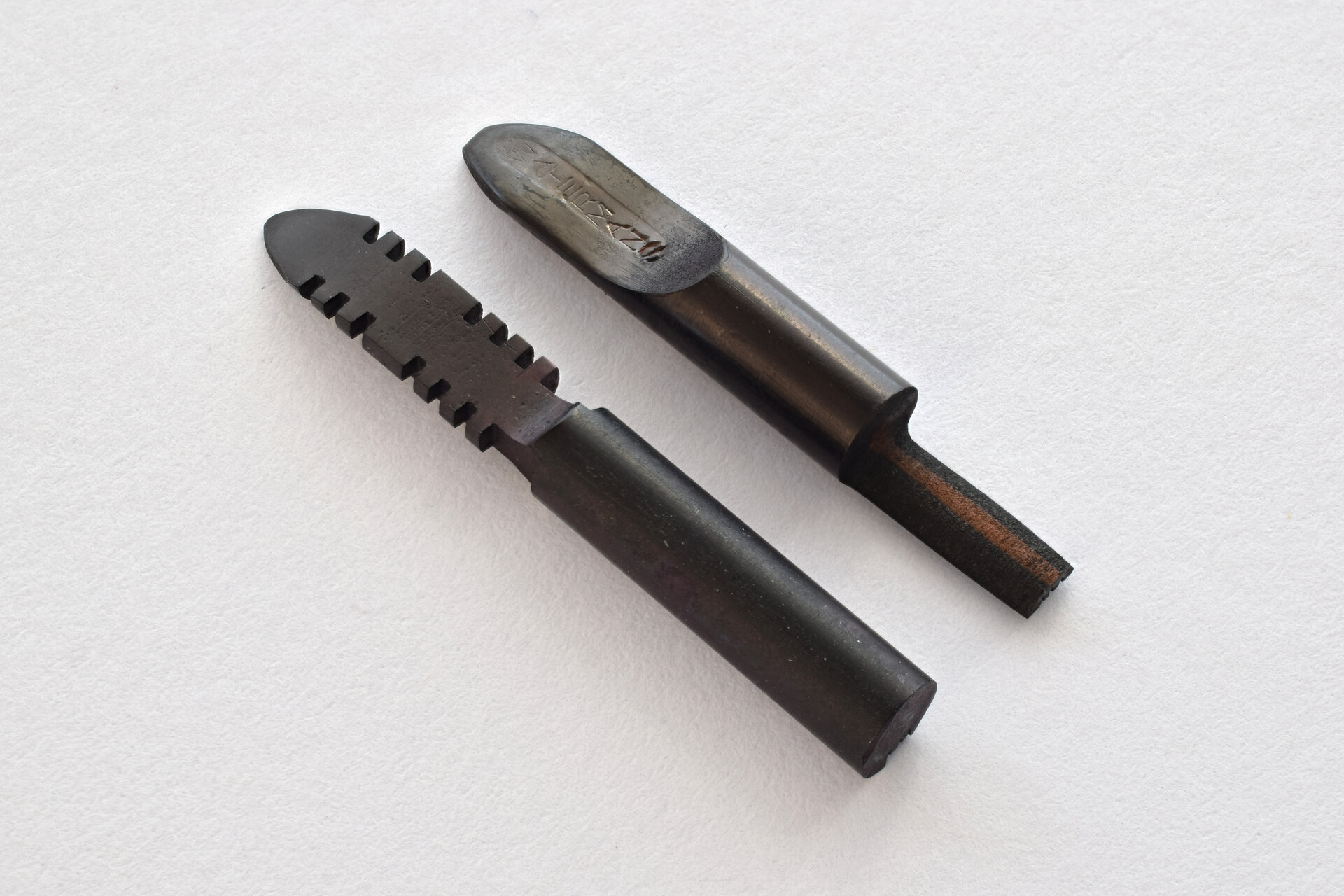 Fig. 3
Fig. 3
8It is important that we water the grip section so that the feed is soaked with water before we start hitting. It is also important to heat the grip section (for example with a standard hair dryer) to reduce the risk of breakage. If you then hit the rod with the hammer again and again, carefully and above all straight as a die, and have done everything else correctly, you will have three undamaged parts in front of you:
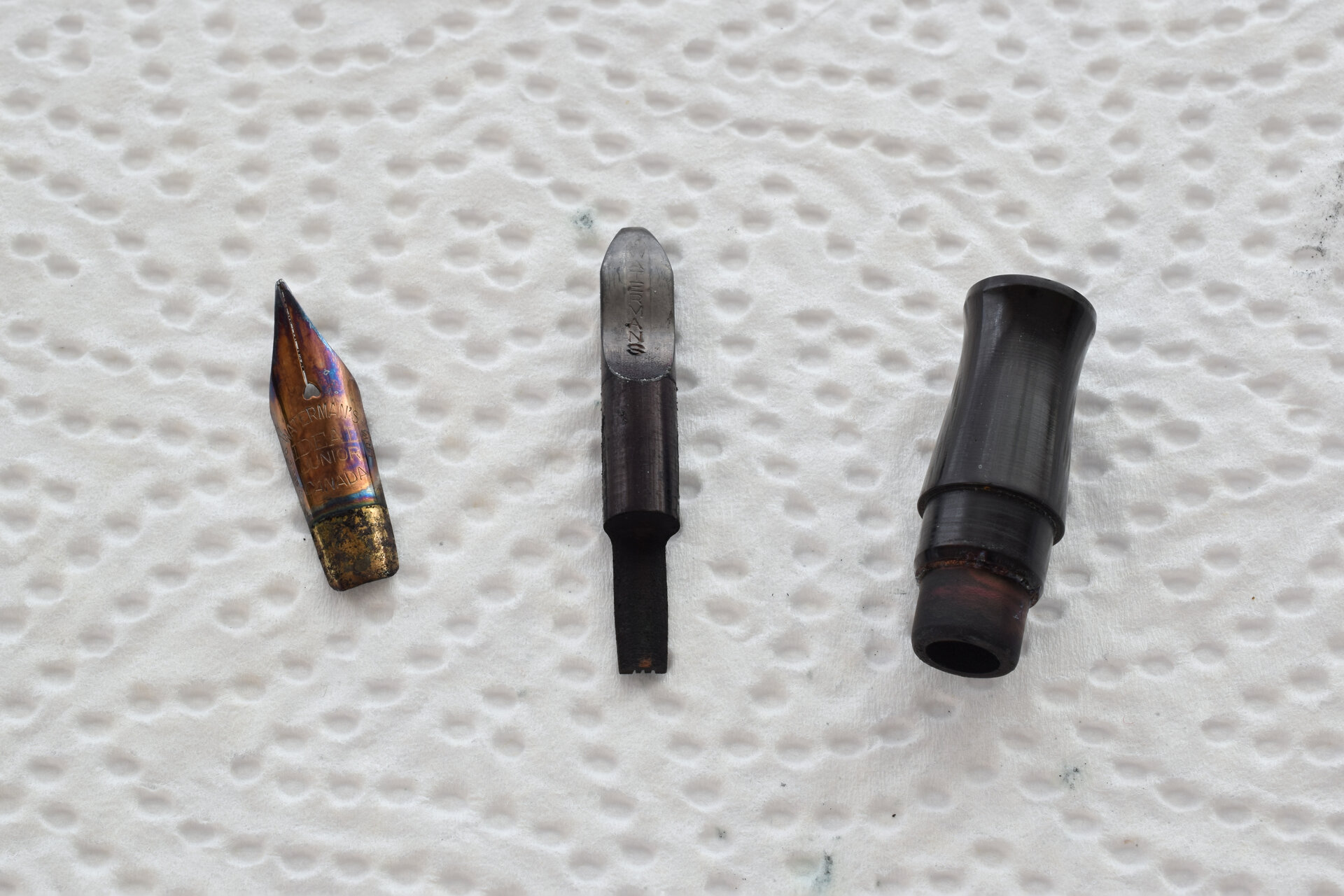 Fig. 4
Fig. 4
9We then polish the nib with the Jeweler’s Red and a cotton swab:
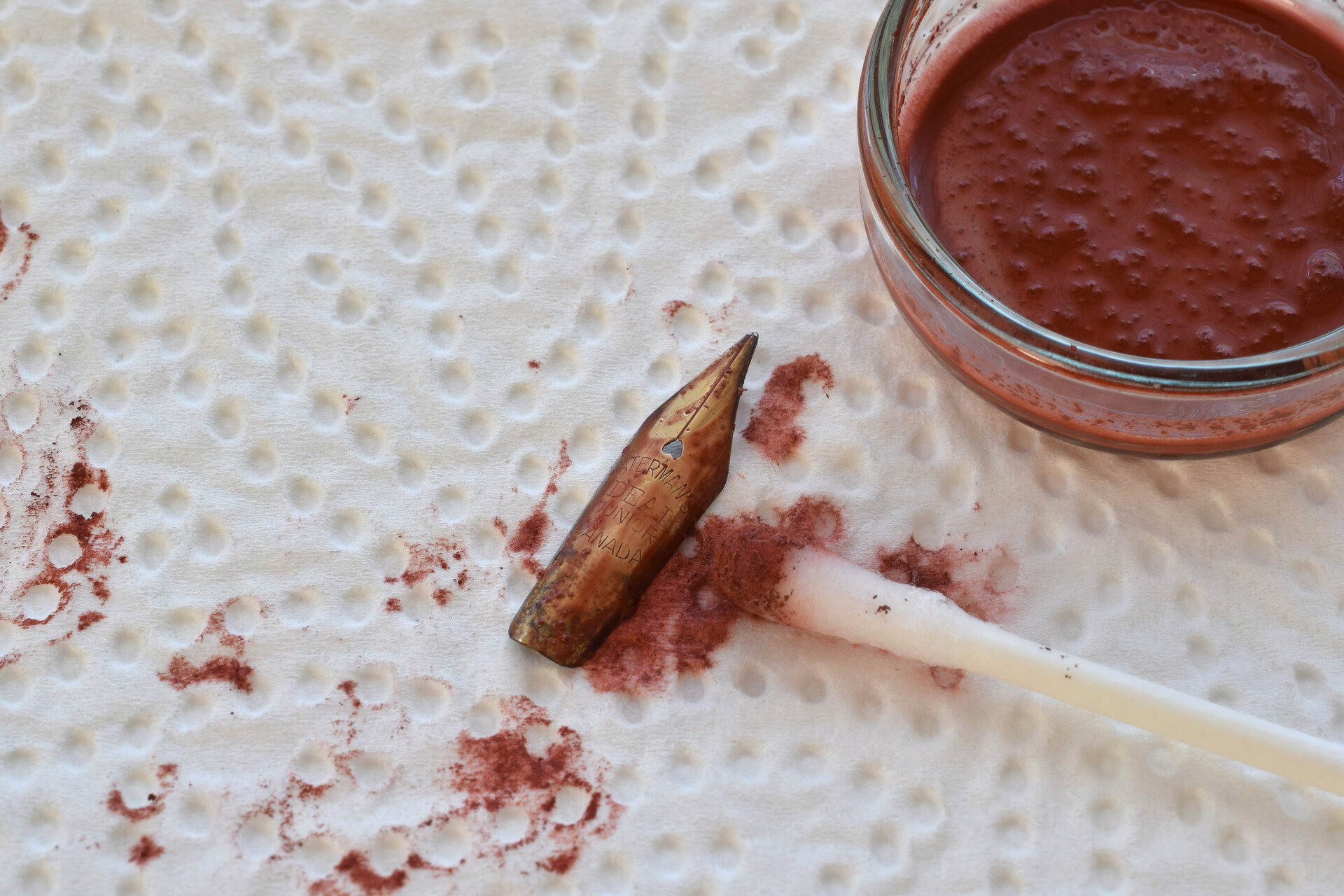 Fig. 5
Fig. 5
10Finally, we carefully clean the nib in soapy water:
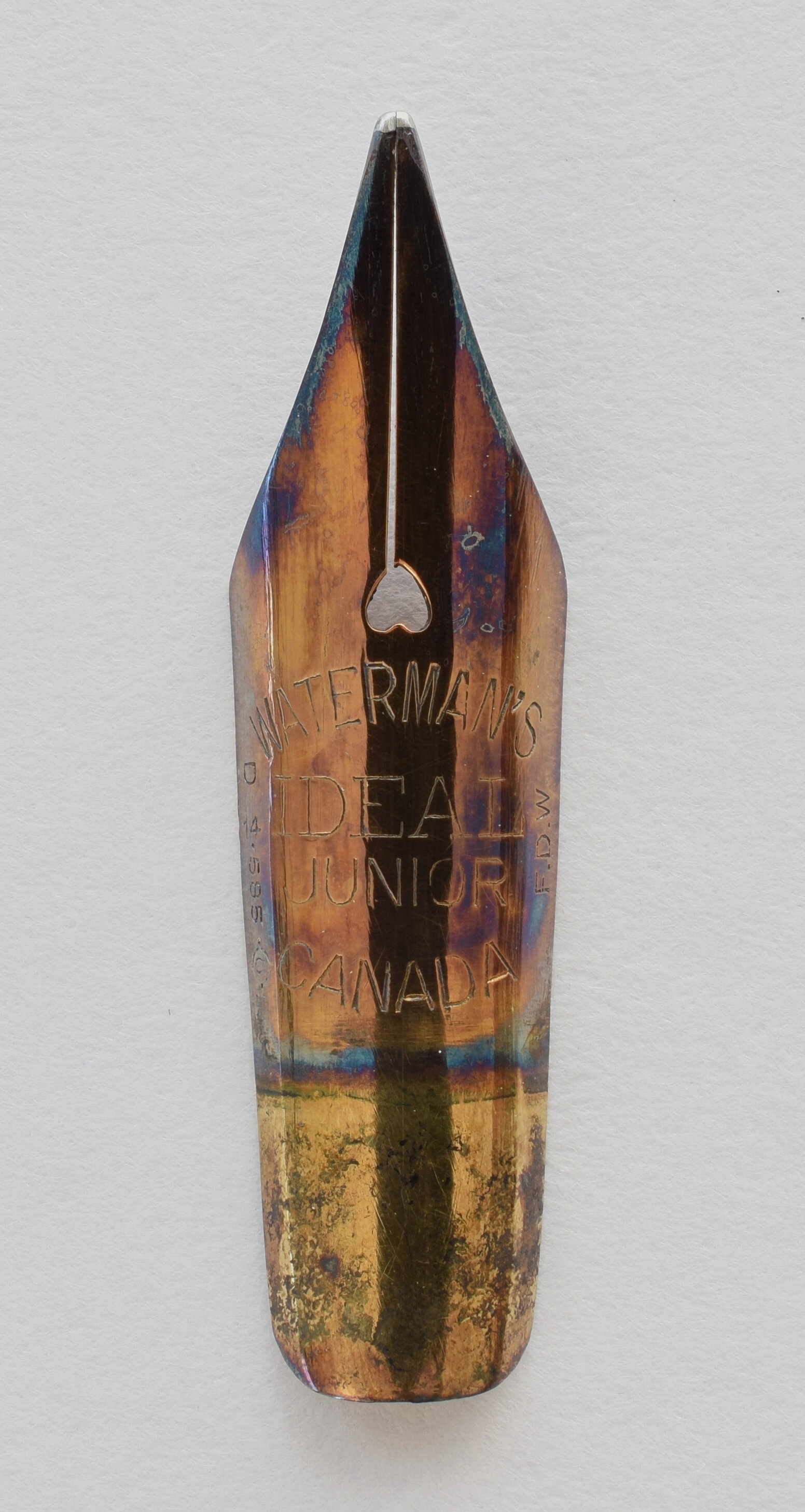 Fig. 6
Fig. 6
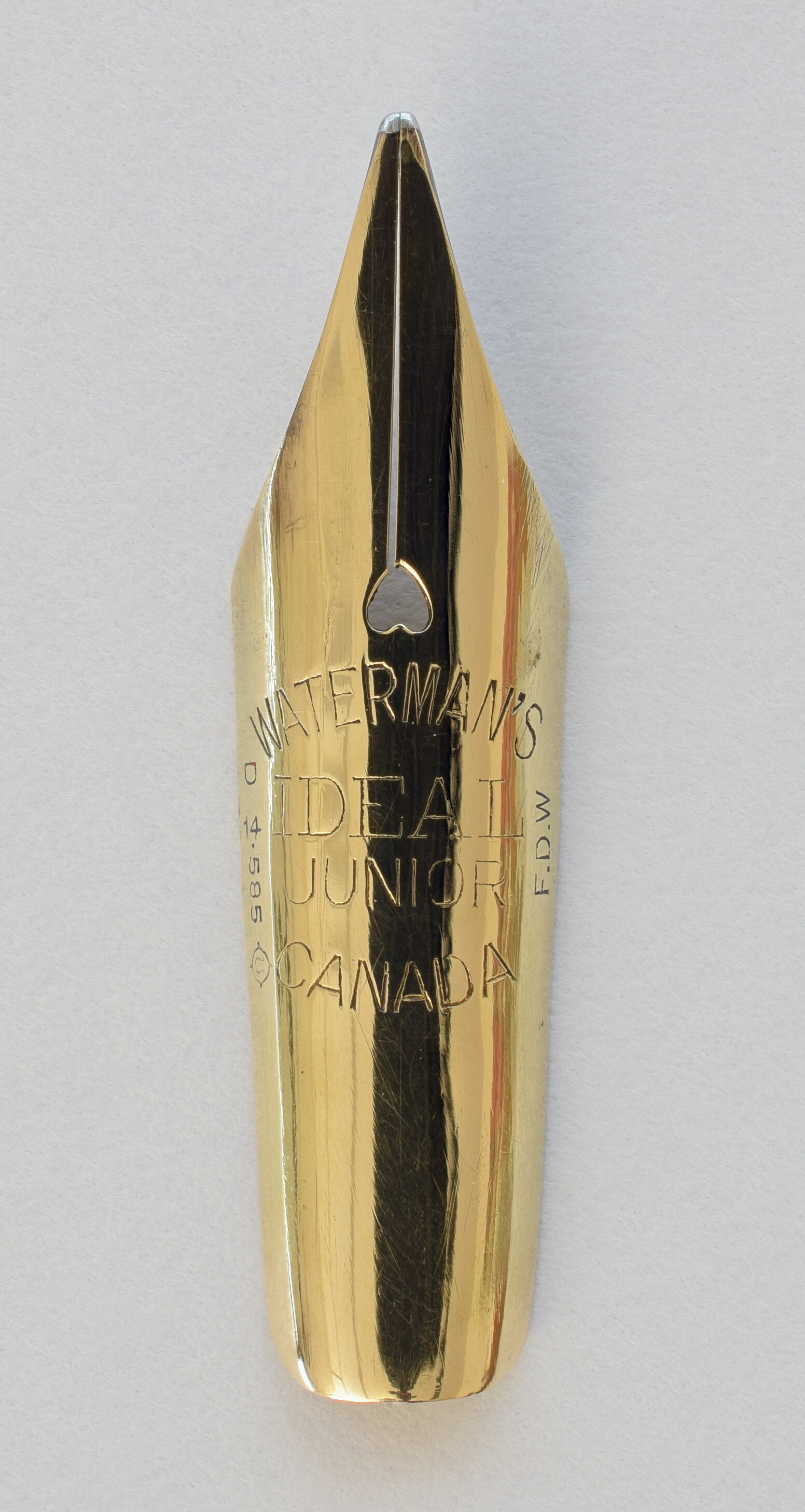 Fig. 7
Fig. 7

